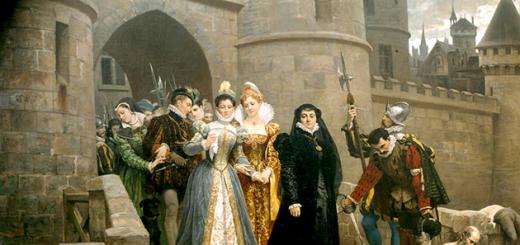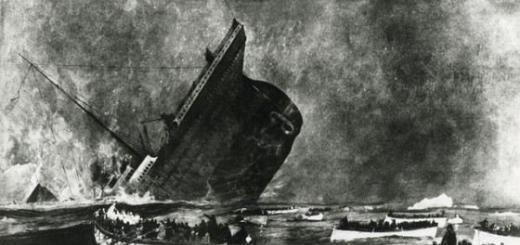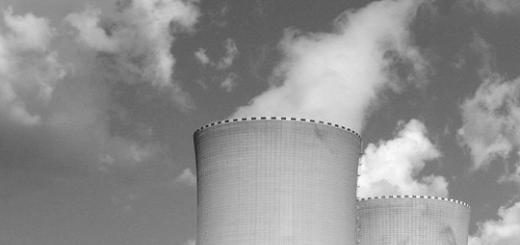The deportation of the Crimean Tatars in the last year of the Great Patriotic War was a mass eviction of local residents of Crimea to a number of regions of the Uzbek SSR, the Kazakh SSR, the Mari ASSR and other republics of the Soviet Union. This happened immediately after the liberation of the peninsula from the Nazi invaders. The official reason for the action was the criminal assistance of many thousands of Tatars to the occupiers.
Crimean collaborators
The eviction was carried out under the control of the USSR Ministry of Internal Affairs in May 1944. The order for the deportation of the Tatars, allegedly members of the collaborationist groups during the occupation of the Crimean ASSR, was signed by Stalin shortly before that, on May 11th. Beria substantiated the reasons:
Desertion of 20 thousand Tatars from the army during the period 1941-1944; - the unreliability of the Crimean population, especially pronounced in the border areas; - a threat to the security of the Soviet Union due to collaborationist actions and anti-Soviet sentiments of the Crimean Tatars; - the deportation of 50 thousand civilians to Germany with the assistance of the Crimean Tatar committees.
In May 1944, the government of the Soviet Union did not yet have all the figures regarding the real situation in the Crimea. After the defeat of Hitler and the calculation of losses, it became known that 85.5 thousand newly minted "slaves" of the Third Reich were actually stolen to Germany only from among the civilian population of Crimea.
Almost 72 thousand were executed with the direct participation of the so-called "Noise". Schuma - auxiliary police, but in fact - punitive Crimean Tatar battalions, subordinate to the Nazis. Of these 72,000, 15,000 communists were brutally tortured in the largest concentration camp in Crimea, the former Krasnoy collective farm.
Main allegations
After the retreat, the Nazis took part of the collaborators with them to Germany. Subsequently, a special SS regiment was formed from among them. The other part (5,381 people) were arrested by the security officers after the liberation of the peninsula. Many weapons were seized during the arrests. The government was afraid of an armed rebellion of the Tatars because of their proximity to Turkey (the latter Hitler hoped to draw into the war with the communists).
According to the research of a Russian scientist, professor of history Oleg Romanko, during the war years, 35,000 Crimean Tatars helped the Nazis in one way or another: they served in the German police, participated in executions, handed over communists, etc. For this, even distant relatives of traitors were supposed to be exiled and confiscate property.
The main argument in favor of the rehabilitation of the Crimean Tatar population and its return to their historical homeland was that the deportation was actually carried out not on the basis of the real deeds of specific people, but on a national basis.
Even those who did not contribute to the Nazis were sent into exile. At the same time, 15% of Tatar men fought alongside other Soviet citizens in the Red Army. In the partisan detachments, 16% were Tatars. Their families were also deported. Stalin's fears that the Crimean Tatars might succumb to pro-Turkish sentiments, revolt and end up on the side of the enemy were reflected in this mass character.
The government wanted to eliminate the threat from the south as quickly as possible. The eviction was carried out urgently, in freight cars. On the way, many died due to crowding, lack of food and drinking water. In total, about 190 thousand Tatars were deported from Crimea during the war. 191 Tatars died during transportation. Another 16 thousand died in new places of residence from mass starvation in 1946-1947.
So, friends - today there will be a post about rather tragic events - exactly 75 years have passed since the Stalinist genocide of the Crimean Tatars in. On May 18, 1944, the Crimean Tatars were deported in freight cars from Crimea to remote regions of the USSR - in particular, to sparsely populated regions of Kazakhstan and Tajikistan. The deportation was carried out by the punitive organs of the NKVD, and the deportation order was personally signed.
"But Stalin won the war!" - fans of the USSR speak in the comments - "If Stalin had not sent people to concentration camps, then Hitler would have done it for him!" neo-Stalinists and conspiracy theorists echo them. However, the truth is that there can be no justification for this genocide - just as there is no justification for other crimes of Stalin - such as deportation and.
So, in today's post I will tell you about the deportation of the Crimean Tatars - which should not be forgotten today, so that it does not happen again under the cries of "we can do it again!" In general, be sure to go under the cut, write your opinion in the comments, well, add to friends do not forget)
Why did the deportation begin?
It was established in 1922, and in the same year Moscow recognized the Crimean Tatars as the indigenous population of Crimea. In the interwar period, in the 1920s and 30s, Tatars made up almost a third of the population of Crimea - about 25-30%. In the thirties, after Stalin came to power, mass repressions began against the Tatar population of Crimea - dispossession and dekulakization of the Tatars, repressions, mass "purges" of the intelligentsia in 1937-38.
All this turned many Tatars against the Soviet regime - during the war, several thousand Tatars fought against the USSR with weapons in their hands - in fact, I touched on this issue a little in a post with - how and why people fought against the USSR. In the post-war years, this allegedly became the "official reason" for the deportation of the Crimean Tatars - although by the same logic it was possible to deport all Russians from Russia - at least 120-140 thousand people fought in Vlasov's army alone (not counting other formations).
In fact, the Tatars were deported for completely different reasons - the Crimean Tatars were historically strongly associated with Turkey and were also Muslims - and Stalin decided to deport them precisely for this reason - since they did not fit into his head in the picture of the "ideal USSR" and were "surplus people". This version is also supported by the fact that, along with the Tatars, other Muslim ethnic groups were evicted from the areas adjacent to Turkey - Chechens, Ingush, Karachays and Balkars.
How exactly did the deportation take place?
NKVD soldiers broke into Tatar houses and declared people "enemies of the people" - allegedly because of "treason" they were permanently evicted from Crimea. According to official documents - each family could take up to 500 kilograms of luggage with them - however, in reality, people managed to take much less, and most often they went to the freight cars just in what they were wearing - the houses and the things left were looted by the military and soldiers of the NKVD.
People were transported by trucks to railway stations - later sent to the east by about 70 echelons with tightly closed and nailed doors of freight cars overflowing with people. More than 8,000 people died during the very movement of people to the east - most often people died of typhus or thirst. Many, unable to endure suffering, went mad.
In the first two years, about half (up to 46%) of all deported people died - unable to adapt to the harsh conditions of the lands where they were sent. Nearly half of those 46% were children under the age of 16, who had the hardest time. People died from lack of clean water, from poor hygiene - because of which malaria, dysentery, yellow fever and other diseases spread among the deportees.
Soviet concentration camps and erased memory.

In all this tragedy, there is another very important point - which Russian sources are silent about. The settlements themselves, where the people were sent, were not any villages or cities. Most of all they looked like real concentration camps- these were special settlements fenced with barbed wire, around which there were checkpoints with armed guards.
The exiled Tatars were used in slave labor in the form of almost free labor - they worked for food on collective farms, state farms and industrial enterprises - the exiled Crimean Tatars were entrusted with the hardest and dirtiest work, such as manually harvesting cotton treated with pesticides or building the Farkhad hydroelectric power station.
In 1948, Soviet Moscow declared that this would always be the case - the Tatars were recognized as life prisoners and had no right to leave the territory of special settlement camps. Even the Soviet authorities constantly incited hatred for the Crimean Tatars - the locals were told terrible stories that terrible "traitors to the motherland, cyclops and cannibals" were coming to them - from whom they should stay away. According to eyewitnesses, many local Uzbeks then felt the Crimean Tatars to find out if their horns grow?
In 1957, the USSR began to erase all memory of the Crimean Tatar people. By this year, all publications in the Crimean Tatar language were banned, and from the Great Soviet Encyclopedia about the Crimean Tatars - like they never existed.
Crimes without a statute of limitations. instead of an epilogue.
All the time that has happened since the deportation - the Crimean Tatars fought for their right to return to their homeland - constantly reminding the Soviet authorities that there is such a people, and it will not be possible to erase the memory of him. The Tatars held rallies and fought for their rights - and finally, in 1989, they achieved the restoration of their rights, and the Supreme Soviet of the USSR in November 1989 recognized the deportation of the Crimean Tatars illegal and criminal.
As for me, these crimes of the Soviet government do not have a statute of limitations and are no different from the Nazi Holocaust - he also chose an "objectionable people" for himself and tried to destroy both him and all memory of him.
The good thing is that the USSR itself recognized these actions as crimes. The bad thing is that now there has been a turn back - many from Russia are now again looking at Stalin's deeds and shouting "Crimea is ours!" and "we can repeat" - apparently, these are the descendants of those who once built concentration camps for the Crimean Tatars and stood at checkpoints with machine guns ...
Write in the comments what you think about all this.
The forced eviction of the Crimean Tatar population took place on May 18, 1944. It was on this day that employees of the punitive body of the NKVD came to the Crimean Tatar houses and announced to the owners that they would be evicted from Crimea because of treason. By order of Stalin, hundreds of thousands of families were sent by train to Central Asia. During the period of forced deportation, about half of the migrants died, a third of them were children under 14 years old.
Therefore, Ukrinform infographic dedicated to the Day of Remembrance of the victims of the genocide-deportation of the Crimean Tatar people from Crimea.
Spring 1944: timeline of events
April 8-13 - the operation of the Soviet troops to expel the Nazi invaders from the territory of the Crimean peninsula;
April 22 - in a memorandum addressed to Lavrenty Beria, the Crimean Tatars were accused of mass desertion from the ranks of the Red Army;
May 10 - Beria, in a letter to Stalin, proposed to evict the Crimean Tatar population to Uzbekistan, citing the accusation of "treacherous actions of the Crimean Tatars against the Soviet people" and "the undesirability of the further residence of the Crimean Tatars on the border outskirts of the Soviet Union";
May 11 - A secret resolution of the State Defense Committee No. 5859ss "On the Crimean Tatars" was adopted. It induced unfounded claims against the Crimean Tatar population - such as mass betrayal and mass collaborationism - which became the rationale for the deportation. In fact, there is no evidence of "mass desertion" of the Crimean Tatars.
“Detatarization” of Crimea by punitive bodies of the NKVD:
32 thousand employees of the NKVD were involved in the operation;
the deportees were given from a few minutes to half an hour to collect;
it was allowed to take with you personal belongings, dishes, household equipment and provisions up to 500 kg per family (in fact, 20-30 kg of things and products);
the Crimean Tatar population was sent by echelons under escort to places of exile;
the property left behind was confiscated by the state.
Number of Crimean Tatar population deported from Crimea:
183 thousand people in a general special settlement;
6,000 to reserve management camps;
6 thousand in the Gulag;
5,000 special contingents for the Moscow Coal Trust;
only 200 thousand people.
Also among the adult special settlers were 2882 Russians, Ukrainians, Gypsies, Karaites and representatives of other nationalities.
Geography of settlement of Kyryml:
More than 2/3 of the deported Crimean Tatars were sent to the Uzbek SSR. The first 7 echelons with deportees arrived in Uzbekistan on June 1, 1944, the next day - 24; June 5 - 44; June 7 - 54 echelons. All of them were sent to Tashkent - 56 thousand 641, Samarkand - 31 thousand 604, Andijan - 19 thousand 773, Fergana - 16 thousand, Namangan - 13 thousand 431, Kashkadarya - 10 thousand, Bukhara region - 4 thousand. Human.
In total, 35,275 families of Crimean Tatars were deported to the Uzbek SSR.
Crimean Tatars also arrived in the Kazakh SSR - 2 thousand 426 people, the Bashkir ASSR - 284, the Yakut ASSR - 93 people, in the Gorky region of Russia - 2 thousand 376 people, as well as Molotov - 10 thousand, Sverdlovsk - 3 thousand 591 people, Ivankovskaya - 548, Kostroma region - 6 thousand 338 people.
According to researchers, human losses during the transportation of the Crimean Tatars by echelons to the east amounted to 7,889 people. In the certificate on the movement of special settlers in Crimea in 1944-1946, it was noted that in the first period 44,887 people died among them, that is, 19.6%.
Consequences of deportation
The deportation led to catastrophic consequences for the Crimean Tatars in places of exile. A significant number of deportees (estimated at 15 to 46%) died of starvation and disease in the very first winter of 1944-45.
As a result of the deportation, more than 80,000 houses, more than 34,000 homesteads, about 500,000 heads of livestock, all stocks of food, seeds, seedlings, pet food, building materials, tens of thousands of tons of agricultural products were confiscated from the Crimean Tatars. . 112 personal libraries, 646 libraries in elementary and 221 in secondary schools have been liquidated. In villages, 360 reading huts ceased to operate, in cities and district centers - more than 9 thousand schools and 263 clubs. Mosques were closed in Evpatoria, Bakhchisarai, Sevastopol, Feodosia, Chernomorskoe and in many villages.
In chapter
On the eve of the anniversary of the deportation of the Crimean Tatars, the head of the Crimea, Sergei Aksyonov, handed out hundreds of keys to new apartments to the descendants of the exiles, as if once again compensating them for the moral costs of the hardships and suffering they had suffered. But how much can one “pay and repent” if back in Soviet times the country’s authorities paid for the deportation of the Crimean Tatars at least three times?
That's right: the Soviet Union three times compensated the deported Crimean Tatars for their material costs incurred as a result of resettlement in the republics of Central Asia, as well as in Moscow (!), Samara, Guryev and Rybinsk. Only at the disposal of the trust "Moskvougol", as follows from the telegram addressed to People's Commissar Lavrenty Beria dated May 20, 1944, 5 thousand "limiters" of Crimean Tatar nationality were sent. The resolution of the State Defense Committee No. 5859 dated May 11, 1944 stipulated that the settlers in the new place would be compensated “according to exchange receipts” for real estate, livestock, poultry and agricultural products received from them in the Crimea. All compensation was paid before March 1, 1946. At the same time, at the new place of residence, each family of migrants was provided with housing - an apartment in the city or a house in the countryside. In other words, the deportees were given money for housing left in Crimea and were immediately provided with new houses and apartments free of charge. But that's not all. In 1989, by decrees of the Council of Ministers of the USSR, as well as the Councils of Ministers of Ukraine, Uzbekistan and Tajikistan, the settlers were compensated for their material costs for the third time. For migrants arriving in Uzbekistan (the Crimean Tatars were not deported to Tajikistan, they moved there later and solely of their own free will), the Agricultural Bank provided interest-free loans for household equipment - 50 thousand rubles per family with installments up to 7 years. Also, each migrant was given 8 kilos of flour, 8 kilos of vegetables and 2 kilos of cereals every month free of charge. Recall: it was the summer of 1944, the war was still going on, and in many parts of the country there was hunger.
The cruelty of the Crimean Tatars surprised even the SS
Until now, scientists are arguing how many Crimean Tatars were deported from Crimea, although it seems that there is nothing to argue about - it is enough to study archival documents. In a telegram sent on May 20, 1944 to People's Commissar Lavrenty Beria by his deputy Bogdan Kobulov, these figures are given: 191,044 people were evicted. By the way, this document contains other very interesting figures. Today, there is a lot of talk about the repressions that Crimean Tatars were subjected to en masse, although one can hardly talk about mass character. During the entire "Crimean operation" of 1944, 5989 "anti-Soviet elements of the Crimean Tatar nationality" were arrested. Is this a lot, considering that only in the first two months of the occupation, 20 thousand Crimean Tatars took the oath of allegiance to the Fuhrer? At the same time, during the deportation, 10 mortars, 173 light machine guns, 2650 rifles, 192 machine guns and more than 46 thousand pieces of ammunition were confiscated from the deportees! In total, after the liberation of Crimea, 9888 rifles, 724 machine guns, 622 machine guns and 49 mortars were seized from the Tatars.
The Germans even issued a special circular forbidding Crimean Tatars serving in the SS to independently conduct interrogations
“In January 1942, Hitler issued an order to form the Crimean Tatar units of the SS under the leadership of Obergruppenführer Ohlendorf,” recalled the head of the Crimean partisan movement, writer Georgy Seversky. - Part of the volunteers - 10 thousand fighters - were enrolled in the Wehrmacht, another 5 thousand were accepted into the so-called reserve to replenish the formed combat units. In addition, the village elders gathered another 4,000 people into "detachments to combat partisans." For comparison: about 10 thousand Crimean Tatars went to serve in the Red Army, but most of them deserted from the 51st Army during the retreat from the Crimea.” And either 391 or 598 Crimean Tatars were partisans in Crimea - in fairness it should be noted that 12 of them were nominated for the title of Hero of the Soviet Union.
The Crimean Tatars served Hitler, as they say, to the conscience. The tragedy of the "Crimean Khatyn" - the Greek village of Laki is well known. On March 23, 1942, the Crimean Tatar punishers burned alive several hundred inhabitants of this village, mostly Greeks and Armenians, most of whom were women, children and the elderly. “Partisans who managed to escape from captivity said that the Crimean Tatars, their guards, were distinguished by unheard-of cruelty,” Seversky recalled. “The Germans even issued a special circular forbidding the Crimean Tatars serving in the SS to conduct interrogations on their own, they knew how to torture so cruelly and subtly.” Meanwhile, Mustafa Dzhemilev, who fled to Kyiv, insists: “There have never been traitors among the Crimean Tatars! We have nothing to repent of!” Whom to believe?
Why did the Crimean Tatars move to Tajikistan and not to the Crimea
It is generally accepted that the Tatars were allowed to return to Crimea by Secretary General Mikhail Gorbachev - on November 14, 1989, the Supreme Soviet of the USSR adopted a declaration on the restoration of the rights of the deported peoples. For this, Gorbachev, who authorized this mass repatriation, is idolized by the Crimean Tatars. In fact, it was not the instigator of “perestroika” who allowed the repatriates to return. Back in 1956, a decree was prepared by the Presidium of the Supreme Soviet of the USSR on the restoration of the national autonomy of the Chechens, Ingush, Kalmyks and Karachays - in fact, these peoples were thereby rehabilitated. It was expected that the Crimean Tatars would be pardoned at the same time, but the then Soviet leader Nikita Khrushchev initially crossed out the mention of them from the draft decree with his own hand.
Two people worked for the Crimean Tatars - Anastas Mikoyan and Leonid Brezhnev. And they eventually persuaded the Secretary General. So at the end of April 1956, a decree was issued “On lifting restrictions on special settlements from Crimean Tatars, Balkars, Turks - citizens of the USSR, Kurds, Hemshils and members of their families evicted during the Great Patriotic War.” From that moment on, Crimean Tatars were not forbidden to settle anywhere on the territory of the USSR, including in the Crimea. But for some reason, the settlers rushed to Tajikistan, and not to their small homeland. The reason for this was that the leadership of the republic especially favored the Crimean Tatars, providing migrants with a lot of special opportunities. By the way, this explains the fact that today in Crimea more than a third of doctors are Crimean Tatars by nationality. The fact is that in Soviet times there was an unspoken agreement between the Crimean Tatar diaspora and the leadership of Tajikistan that the quota of Crimean Tatars in the Republican Medical Institute would be 90%, while in the Ukrainian Soviet Crimea no one promised Crimean Tatars such preferences.
In general, the deportees were clearly not going to move en masse to Crimea, and the leadership of the USSR decided to encourage them to do so. In August 1965, a large group of Crimean Tatars - mostly communists and war veterans - were invited to the Kremlin. They were received by the chairman of the Presidium of the Supreme Soviet of the USSR, Anastas Mikoyan, formally the second person in the state after Brezhnev. “Why don’t you return to Crimea?” the Soviet leader asked. “We will return as soon as Moscow declares Crimea a Crimean Tatar national autonomy,” the head of the delegation, Riza Asanov, answered Mikoyan. In general, I found a scythe on a stone: it was ridiculous to turn the peninsula into national autonomy, given that even a tenth of its inhabitants would not have been from the Crimean Tatars. But the leaders of the Tatars rested: if there is no autonomy, there will be no mass return to Crimea. The result is known to all: repatriation was postponed until the end of the 80s.
Sergey MARKOV, political scientist, member of the Public Chamber of the Russian Federation:
– We have already recognized – at the highest state level – that the expulsion of the Crimean Tatar people was cruel and unjust. The country's leadership expressed its sympathy to all the innocent victims of this expulsion. However, one must also recognize the obvious fact that the reason for the expulsion was valid. Crimean Tatar SS units committed monstrous atrocities. They killed the elderly, and children, and women. They were killed so brutally that the Germans complained about their atrocities to Berlin. Were the conditions of deportation more cruel than the actions of the Crimean Tatar punishers?
And the Day of struggle for the rights of the Crimean Tatar people. #Letters collected shocking but important facts about the deportation of the Crimean Tatars and its consequences.
1. EVEN VETERANS WERE DEPORTED
It is well known that the formal reason for the deportation of the Crimean Tatars - the indigenous people of Crimea - was the accusation of collaborationism. The resolution of the State Defense Committee of the USSR No. GOKO-5859 dated 05/11/1944 on the eviction of the Crimean Tatars from their historical homeland stated that many of them betrayed the Soviet Union, went over to the side of the enemy, and even joined the German punitive detachments. Worse, “Crimean Tatars were especially notable for their cruel reprisals against Soviet partisans and helped the German invaders in organizing the forcible removal of Soviet citizens into German slavery,” the authors of the document claimed. In their minds, deportation was a symmetrical response.

But it should be remembered that before the war and in the period from June 22, 1941 to May 9, 1945, about 21 thousand Crimean Tatars were drafted into the Red Army from the Crimean ASSR. During the war, four Crimean divisions were formed on the territory of the autonomous republic. One of them (Evpatoria) was disbanded almost immediately due to a lack of weapons, but this problem soon affected the defense capability of other links. Most of the mobilized Tatars, however, did not fight on the territory of the ASSR, but on the Transcaucasian and Southwestern fronts.
Many Soviet historians cited the figure - about 20 thousand Crimean Tatar deserters. In the post-Soviet period, Ukrainian historians come to the conclusion that this figure is overestimated at times. During the fighting for Crimea, no more than 4,900 Crimeans went missing, and it is impossible to say that all of them went over to the side of the enemy - probably, many just joined the partisan detachments. At the same time, more than 3,000 Crimean Tatars were killed during the war.

The family of the famous Soviet pilot Amet Khan Sultan was also deported
The demobilized were also subjected to deportation - the number of deported Crimean Tatar veterans is estimated at almost 9 thousand people. People who had been evacuated from the Crimea before the start of the occupation and returned home by the spring of 1944 were also expelled.
2. THERE WERE 15 MINUTES FOR CAMPAIGN
When soldiers began to arrive in trucks on the evening of May 17 in some villages, the Tatars, according to custom, offered them to share the table, Sabe Useinova recalls. But by 19:00, the guests switched to an official tone and began to drive people out of their houses with rifle butts. Many in the confusion did not have time to take documents with them.
The time allotted for the training camp depended on the whim of the commander of the group of soldiers, since the prescribed 2 hours for the training camp were practically not given to anyone. True, there is evidence of how the Chailak family was allowed to bake before sending the cakes - just about 2 hours delay. Usually 10-15 minutes were given, and sometimes even less: in Ak-Bash - 7, in Bakhchisarai - 5.
It is clear that it was impossible to collect the allowed 500 kg of things per family for such a period of time. Any official permits, including the rations due to the special settlers, turned into a mockery.
3. TOTALLY MORE THAN 190 THOUSAND PEOPLE WAS DEPORTED CIVIL
A telegram from the NKVD addressed to Stalin reported that 183,155 people had been deported from Crimea (after demobilization in 1945, this figure would increase). Most of the Crimean Tatars (151 thousand) were deported to Uzbekistan. Smaller groups ended up in Kazakhstan, Tajikistan, the Mari ASSR and the Urals.
“In the course of the eviction of the Tatars, 1,137 anti-Soviet elements were arrested, and in total during the operation 5,989 people,” a telegram dated May 20, 1944, addressed to Beria, reported.
The total number of deportees in it is already 191 thousand. The last train arrived at the places of the special settlement on June 8. On this day, Comrade Beria himself reported from Tashkent that 191 people died on the way - that is, approximately one in a thousand. Undoubtedly, this figure is significantly underestimated.
People on the trains died not only from hunger (some of them received state-owned food only once), thirst, stuffiness, and various diseases, but also from catastrophic stress. Numerous testimonies of corpses being pushed out of the windows under the roof of the car, and in the best case, left without burial somewhere at the stop, confirm the fact that the deaths numbered in the thousands. According to historians, more than 7.8 thousand people died during transportation.

Infographics: Ukrinform
4. ARABAT TATARS FORGOT TO SEND - AND REMEMBERING, DEAL WITH THEM
Due to the lack of documentary evidence, many consider the tragedy at the Arabat Spit a myth. We are talking about the Crimean Tatars, who lived along a narrow strip of land near the Sea of \u200b\u200bAzov. For some reason, the residents of the Arabat Spit escaped deportation. When in 1945 Bogdan Kobulov was informed about the omission, he ordered to clear the area within two hours (subsequently, the period was extended to a day). A few Crimeans were gathered at the pier, loaded into the hold of an old barge - or several - and then towed out to sea and opened the kingstones, battening down the upper hatches.
Although it is difficult to say for sure about the reality and scale of this tragic episode, a similar action in the Chechen village of Khaibakh speaks in favor of its veracity, where local residents who could not be deported in time were burned by the NKVD in one of the stables.

Installation by Roman Mikhailov “Radif. The Last Child” is a book made from the metal of railroad freight cars used during the deportation.
5. Special settlers were sent to typhoid state farms
The incidence of the Crimean Tatars in comparison with the inhabitants of Uzbekistan was huge. The main carrier of diseases, including malaria and dysentery, was dirty water. In addition, the Soviet authorities neglected the danger of the spread of quarantine diseases. Even before the arrival of the trains, a telegram was sent to Moscow stating that not a single settlement in the Kermeninsky district of Uzbekistan was ready to receive settlers. The reason is the spread in it of two forms of typhus (F-1 and F-5). Both forms are extremely dangerous and are easily transmitted from person to person. The patients were supposed to be completely isolated - but nothing of the kind, of course, happened. Crimean Tatars were sent to state farms suffering from typhus, did not receive proper medical care and died with their families. In 1944-48. mortality among them was higher than the birth rate by almost 7 times.

6. PROPAGANDA STIGMATIZED THE DEPORTED TATARS – AND NOT ONLY AS “COLLABORATIONISTS”
Along the route of the trains with the population, “explanatory work” was carried out. Moreover, the Crimean Tatars were presented not just as traitors to the socialist homeland and accomplices of Hitler, but literally as some fantastic monsters: dangerous animal-like creatures and even cannibals. Historian Valery Vozgrin says: “In Andijan, some Uzbek woman felt for a long time the head of Asanov’s son Murtaza, trying to find horns, even if they were very small.” The locals either tried to stay away from the trains passing through the stations, or vice versa, prepared stones to throw at the newcomers.
A resident of the near-station village Boz-Su recalled: “Everyone was quiet. They were waiting for the door to open. And so the escort opened the door, and all the people leaned forward - each with his own weapon. What appeared before our eyes cannot be described at once. I still can't forget this. Those eyes, those faces, those living corpses that looked at us from the boxcars, barely lifting themselves from the floor on their hands. These half-dead people are before my eyes now and they always, all my life, stand before me when I look into the eyes of elderly Crimean Tatars. It seems to me that it was them that I saw then on the platform.
7. THOUSANDS OF LIBRARIES DESTROYED
Of course, Stalin's policy towards the Crimean Tatars was not limited to mere physical displacement and extermination. The genocide also had its own cultural aspect. More than 500 rural national libraries, 861 school libraries (following the schools themselves), several large libraries and more than 100 large private collections were liquidated. Books in the Crimean Tatar language, kept in Russian libraries, were also destroyed - as a rule, they were burned.

“Crimean Tatars. Whoever has never been to the Crimea has never seen beauty.” Postcard by E.M. Bem (1910)
The library collection "Tavrika" of the 19th century, which included rare books, manuscripts, maps and drawings, was plundered at the beginning of the occupation of Crimea, but the Germans were not interested in exporting books in the language of the Crimean Tatars, and the Soviet leadership was not interested in saving them. In May 1944, the remaining books were burned in the courtyard of the Central Republican Museum. Most of the pre-revolutionary and medieval manuscripts also did not survive this period.
8. LATER EVERYONE RETURNED TO THE HOMELAND
As you know, not only the Crimean Tatars were deported in the 1940s. In 1944, Crimean Armenians, Greeks and Bulgarians were also deported. But, unlike them, who returned to their homeland in the late 50s, the Tatars were formally deprived of such a right until 1974 (in fact, until the 1980s). Many special settlers simply did not have the financial opportunity to return.
Often, Crimean Tatar orphans kept in orphanages received Russian or Uzbek surnames. Later, this prevented them from establishing contact with relatives.
9. THE OLD TOPONYMS WERE NOT SERIOUS ALSO
Crimean Tatars were not just separated from their families and torn from their homes. The very memory of them had to be destroyed, right down to the article from the Great Soviet Encyclopedia. Most geographical names were "Sovietized".
In 1944–1945 in Crimea, 11 regional centers were renamed (Larindorfsky district became Pervomaisky, Ak-Mechetsky became Chernomorsky) and 327 villages. Sometimes the renaming commissions chose traditional “red” toponyms, but sometimes fanciful names like New World, Burevestnik and Zhemchuzhina appeared.

Fragment of the map of Crimea of the Crimean Statistical Office, 1922
In September 1948, Stalin visited the Crimea, and after his meeting with the secretary of the Yalta City Party Committee, a resolution was adopted “On the renaming of settlements, streets, certain types of work and other Tatar designations”. Local governments were forced to choose new names even for mountains and rivers. During the last renaming, 1062 settlements and more than a thousand natural objects received new names - about 80% of their total number. In the 1950s, the process slowed down, although Cape Toprak-Kaya still managed to become a Chameleon.
“The village of Biyuk-Yashlav, the former estate of the Crimean Tatar nobles, was named Repino, because the artist Repin was supposedly there once,” says historian Gulnara Bekirova. “But such thoughtfulness is rare, usually the process was chaotic.”
10. PERSECUTION OF THE CRIMEAN TATARS AS AN ETHNOUS DID NOT END WITH THE XX CENTURY
In 2014, Mustafa Dzhemilev noted that the Russian authorities are thinking about “creating conditions that will maximize the exit of Crimean Tatars from Crimea.” Too often one hears about new searches, disappearances of Crimean Tatars and their oppression on the annexed peninsula. Thus, a new wave of repressions was reported on May 8, when Russian security forces took away the son of the head of the district Majlis, Ilver Ametov, in an unknown direction.
The Mejlis itself is recognized in Russia as an extremist association. According to European human rights activists, this contradicts the decree on the rehabilitation of the peoples of Crimea, which Putin signed after the annexation of the peninsula.
In 2016, the vice-speaker, the so-called. The Crimean State Council Remzi Ilyasov said that the Crimean Tatars would not hold large mourning rallies on May 18. “We agreed that the initiative that was filed last year should be continued this year and that this day be spent peacefully, remembering all our relatives and friends who did not live to see their return to Crimea,” he said.
In fact, this means an unspoken ban on holding mass gatherings by Crimean Tatars.
In Kyiv, on the contrary, actions are being held in support of the Tatars, and the Verkhovna Rada honored the victims of the genocide with a minute of silence. Like the Crimean Tatars, many Ukrainians are deprived of the opportunity to return to their homeland, so solidarity and common memory are more important than ever.










